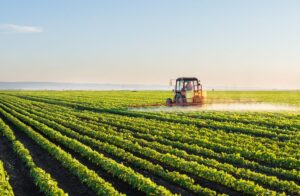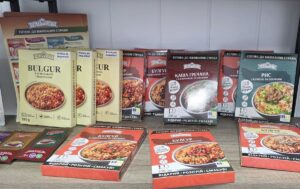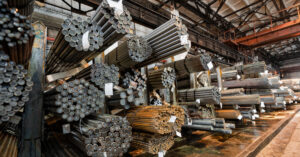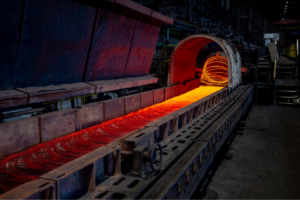
Agricultural production in Ukraine fell by 6.6% in January-November 2025 compared to the same period last year, according to the State Statistics Service.
Thus, according to the results of 11 months of this year, the agricultural production index was 93.4% compared to January-November last year. In particular, the indicator for crop production reached 92.7%, and for livestock production – 96.2%.
Agricultural enterprises suffered slightly greater losses, with production at 93.2% of last year’s level. At the same time, the indicator for crop production reached 92.0%, and for livestock production – 100%. At the same time, the indicator for private farms was 93.7%. For crop production, it was 99.8%, and for livestock production, 90.4%.
The largest decline in production was recorded in the Donetsk region, where this index was 57.4% of last year’s level. There was also a significant decline in the Kherson (70.1%) and Dnipropetrovsk (79.3%) regions.
At the same time, two regions showed positive dynamics: in the Chernihiv region, the agricultural production index rose to 102.2%, and in the Vinnytsia region, to 101.6%.

The Dnipro-based Sol Union group of companies has begun construction of the Neo Food System factory in the Kyiv region. The project capacity of the enterprise will allow it to produce 60,000 ready-made meals per day. The factory will produce ready-to-eat chilled, pasteurized, sterilized, and deep-frozen meals. The group’s investment in this project amounts to UAH 220 million.
This was announced by Dmytro Kysilevsky, Deputy Chairman of the Verkhovna Rada Committee on Economic Development. He noted that Sol Union took advantage of several programs of the “Made in Ukraine” policy for the development of Ukrainian manufacturers to implement its current investment projects. In particular, the group took advantage of a state grant of UAH 8 million for processing, purchasing autoclaves manufactured by the Rozfood plant in Kyiv. In addition, the group attracted loans from the “5-7-9” program. It plans to further expand its loan portfolio.
The launch of the plant will create 260 new jobs in the Kyiv region. The production area is 4,000 square meters.
To implement the Neo Food System factory project, the group purchased a ready-made industrial premises that already has the necessary connected electricity, water supply, treatment facilities, and drainage. The installation of the enterprise’s equipment will begin in April 2026. The launch of production is scheduled for June, and the project is expected to reach its design capacity in September 2026. The first exports to EU countries are planned for 2027.
The Sol Union group of companies includes two food production and packaging factories, a vegetable storage facility with a capacity of 5,000 tons, and warehouses with a total area of 17,000 square meters. Until now, all of the group’s enterprises were located in Dnipro.
The “Made in Ukraine” development policy for Ukrainian manufacturers combines state programs aimed at developing production, attracting investment, and stimulating exports.
FACTORY, FOOD, Kysilevsky, PRODUCTION, semi-finished product

According to preliminary data, Ukrainian metallurgical companies increased their total rolled steel production by 3.9% in January-November this year compared to the same period last year, from 5.741 million tons to 5.966 million tons.
According to information from the Ukrmetallurgprom association on Monday, steel production during this period fell by 3.1% to 6.813 million tons. In November, 589,100 tons of rolled steel and 641,100 tons of steel were produced.
For more information on the largest steel producers and global industry trends, see the Experts Club video analysis review available on YouTube: Experts Club — Leaders of the global steel industry 1990–2024

The Kametstal plant, part of the Metinvest mining and metallurgical group (Kamensk, Dnipropetrovsk region), has completed the reconstruction of continuous casting machine No. 1 in the converter shop as part of its 2025 investment program.
According to the company, following the successful completion of the second stage of the investment project, key equipment of the machine’s pulling and straightening devices has been upgraded.
It is specified that new motor reducers for the pulling and straightening device were installed on each of the seven streams of the CCMC-1, on which thermal shielding was also performed.
“In this way, steelmakers have solved the urgent issue of extending the service life of motor reducers, which ensure the stable movement of the pulling and straightening devices. Previously, this equipment failed prematurely due to the destructive effects of high temperatures,” the report states.
Encoders were also installed and put into operation on all upper motors of the gear motors. These devices, thanks to feedback in control, make it possible to control and stabilize the speed of the continuously cast billet and, thus, increase the accuracy of its cutting.
The second stage of the reconstruction of the No. 1 continuous casting machine was carried out without additional machine stoppages, given the need to fulfill orders for commercial steel products, particularly those of higher quality, for domestic and European customers. Each stream was technically prepared in advance for the replacement of equipment, and during the technological stoppage, updates were carried out in pit stop mode.
As a result of the second stage of reconstruction, metallurgists received a number of technical and economic advantages: several times longer service life of the motor reducers of the stoves; maximum precision of cutting the billets, which made it possible to reduce metal consumption. In addition, the technical solutions implemented optimized the operation of the pulling and straightening device to reduce electricity consumption on the upper and lower motor reducers by 1.2 kW*hour while maintaining stable casting on the machine.
Kametstal is part of the Metinvest Group.